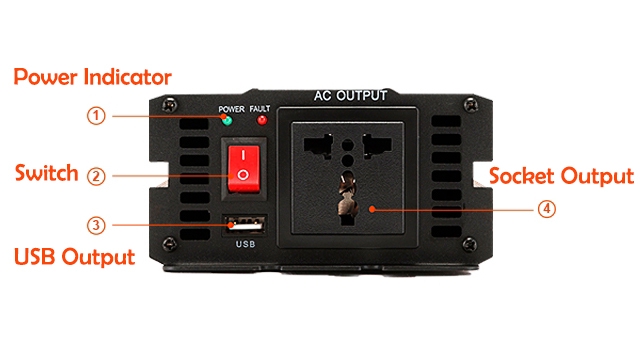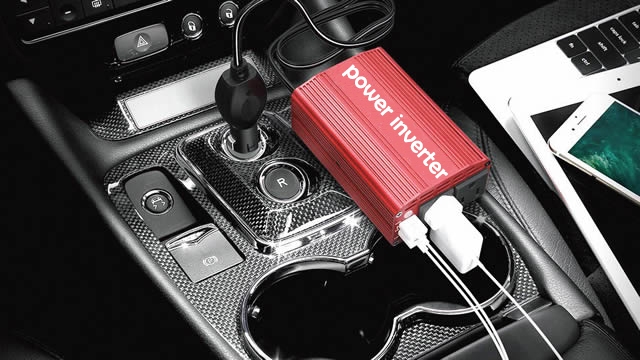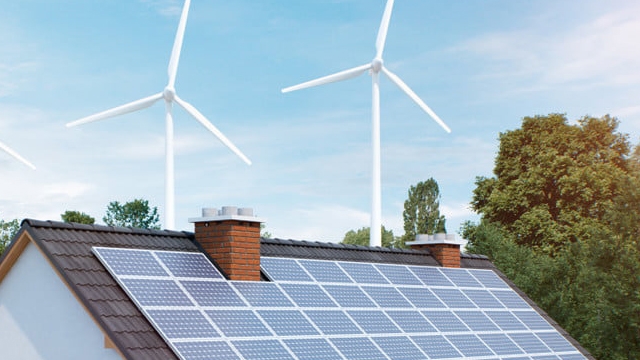A power inverter is a key piece of electrical equipment used to convert DC power to AC power. It plays an important role in a variety of fields including domestic, commercial and industrial. Wherever a 12V DC power source is available, a power inverter can be used to convert 12V DC to 220V AC to bring convenience to your life. PowerHome will give you an overview of what you need to know about power inverters, hopefully this will give you a comprehensive understanding.
Construction of Power Inverter
A power inverter usually consists of an input, an output, an inverter circuit and a control circuit. The input terminal receives input from a DC power source, the inverter circuit is responsible for converting DC power to AC power, and the control circuit monitors and regulates the output voltage and frequency. Devices such as thyristors, field effect tubes or bi-directional thyristors are often used in inverter circuits to realize voltage inversion and output.
In an inverter, key components include capacitors, inductors, and switching devices. Capacitors are used to store energy and smooth the output voltage, inductors are used to stabilize the current, and switching devices control the on-off of the circuit to achieve the inverter function.
Take this 300W Power Inverter as an example please check out its details:

Among them, the power indicator and switch are used to review and control the inverter to turn on and off, and the two outputs are used to connect the load. PowerHome manufacture power inverters with two types of output ports, USB and socket ports.
Basic Parameters
- Rated Power: The rated power is the maximum power that the power inverter can convert under normal operating conditions and determines the load capacity it can support. The higher the output power, the more devices the inverter can connect.
- Input Voltage: Input voltage is the DC voltage that the power inverter can accept.
- Efficiency: Efficiency refers to the ratio of the power lost in the conversion process of the power inverter to the input power. High efficiency power inverter can reduce energy loss and improve power generation efficiency.
- Output Voltage: Output voltage refer to the voltage at which the power inverter outputs AC power. The stable accuracy of the output rated voltage value is generally stipulated as follows: In steady state operation, the voltage fluctuation range should have a limit, for example, its deviation does not exceed ±3% or ±5% of the rated value. Under the dynamic situation of sudden load change or other disturbing factors, the output voltage deviation should not exceed ±8% or ±10% of the rated value.
- Output Frequency: The frequency of the AC voltage output from the inverter should be a relatively stable value, usually 50 Hz, and its deviation should be within ±1% under normal working conditions.
- Output Waveform: The output waveform of the inverter includes modified sine wave, square wave and pure sine wave types. A pure sine wave is the closest waveform to standard grid power and is suitable for equipment with power quality requirements.
Applications of Power Inverter
Solar or Wind Energy Systems
There are already many homes that use solar and wind power to generate electricity, and power inverters are key devices that convert the DC power generated by photovoltaic panels or wind turbines into AC power that can be supplied to the home. This application allows homes to be self-sufficient in the provision of electricity, enabling users to experience off-grid living and reducing reliance on the traditional electricity network.
Electric Vehicle Charging Facilities

Electric vehicle charging facilities require the conversion of DC power to AC power for charging electric vehicles. Power inverters can also convert DC power from the car battery to AC power for use by electronic devices. This allows drivers to easily charge cell phones, laptops, and other electronic devices in the vehicle, increasing the utility of the vehicle while driving.
Uninterruptible Power Supply (UPS)
An uninterruptible power supply (UPS) needs to have a stable AC power output to ensure that electrical equipment operates normally in the event of power fluctuations or power outages. The power inverter plays a key role in the UPS system.
Industrial Automation Control System (IACS)
Equipment in industrial automation control systems often requires a stable supply of AC power. Power inverters can convert DC power into AC power that meets the requirements of the equipment to meet the needs of industrial automation control systems.
Development Prospects of Power Inverter
- Market Scale Continues to Grow: With the implementation of new energy policies and the reduction of new energy power generation costs, the new energy power generation market will continue to expand, which will drive the increase of power inverter market demand.
- Technological Innovation: Future power inverters will develop in the direction of higher efficiency, miniaturization and intelligence. For example, the use of new switching components, integrated more intelligent functions. Smaller inverters would be more suitable for powering homes.
- Application Expansion: With the development of new energy technology, the application fields of power inverters will continue to expand, such as energy storage systems, new energy vehicles and other fields.
- Policy Support: Governments attach great importance to the development of new energy industry and will support the power inverter industry in terms of policy, capital and technology.

Overall, power inverters play a key role in modern society, providing strong support for renewable energy use, modern transportation and industrial manufacturing. In the future, power inverters are expected to make even greater technological breakthroughs, realizing higher energy efficiency, smarter control and more stable output. Through continuous innovation and technological advancement, power inverters will play an even more important role in bringing more convenience and benefits to energy conversion and utilization.
(1).png)
(1).png)